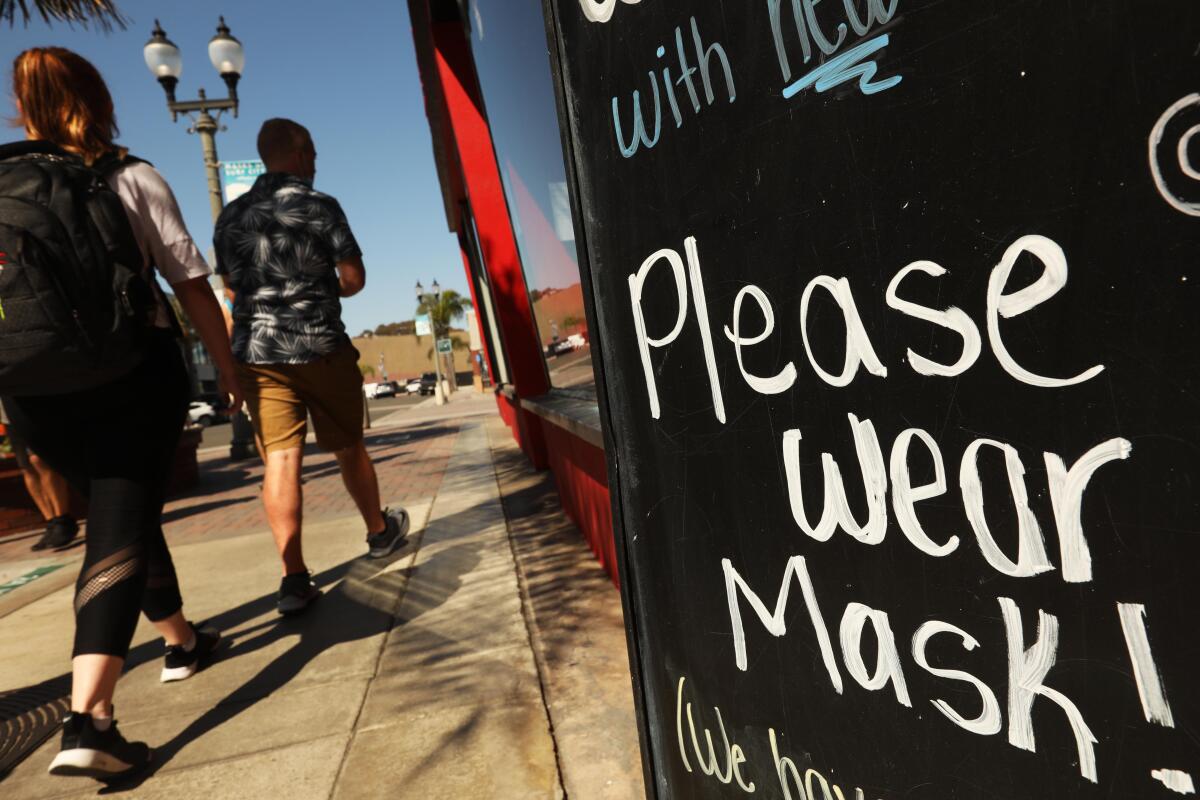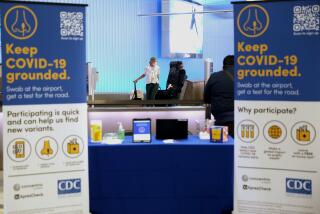State’s freeze of COVID-19 watchlist magnifies breakdown in communication to counties

When Mono County was placed on the state’s COVID-19 watchlist for the first time last month after a surge in cases was reported in the town of Mammoth Lakes, the onus was placed on restaurants as the culprit behind the surges.
Eateries that had instituted safety protocols starting in March had to prove their staffs were in the clear. Some businesses with just one case or none at all were forced to close, employees were out of work, and hundreds of thousands of dollars in revenue was lost during the busiest time of the season.
Thirty-five out of roughly 580 restaurant employees ultimately tested positive for the coronavirus, Mono County Health Officer Dr. Tom Boo told restaurant owners earlier this week. In a Zoom meeting with health officials and in conversations with The Times, restaurant owners said they felt their sector had been vilified by the county.
In the time since they’ve been allowed to reopen, some owners said they believed the county’s previous announcement had stigmatized their businesses, which in turn created mistrust that has led to a drop in customers.
“We’ve lost a significant local following. People have lost confidence — they think we’re some dangerous breeding ground for the virus,” restaurant owner Alisa Mokler said.
The population of Mammoth Lakes is about 8,100 — more than half of Mono County’s roughly 14,200. The county created an action plan to gain a handle on the case surge in order to move off the state’s monitoring list. Although the case count has risen to 160 from 84, the rate of positive test results has dropped to 4%, which is below the state’s threshold of 8% — the metric that placed the county on the state’s monitoring list in the first place.
But the watchlist was frozen last week after state officials announced that a backlog of test result data had led to an inaccurate count of coronavirus cases. The list tracks case counts, community transmissions, hospitalizations and other data and guides the state’s decision to allow counties to open certain sectors, including schools and in-person services at places of worship.
State officials confirmed that as many as 300,000 records had not been processed by the computer clearinghouse system relied upon to provide to local officials the test results reported by labs on a daily basis. Two separate errors were identified — one related to a computer server outage, and the other to the expiration of an electronic certificate for data to be transferred from Quest Diagnostics laboratories.
On Monday, Gov. Gavin Newsom said the backlog had been cleared over the weekend. The governor said Friday that more information regarding the list would become available Monday. But county officials throughout the state have said they’ve been left in the dark.
Communication breakdowns between the state and counties have been constant as the state has shifted between reopenings and shutdowns, resulting in a patchwork of rules that differ county by county. Confusion has been magnified over the last two weeks.
“The issue for us and perhaps many counties is how to get off the list when the metrics are below the state thresholds for the required 14 days,” Mammoth Lakes public information officer Stuart Brown said. “We have been unable to get any clarification from the state, and [it’s] even harder now with Dr. Sonia Angell’s departure.”
Angell, Gov. Gavin Newsom’s director of the California Department of Public Health, resigned Sunday, days after the state revealed problems with its database.
Los Angeles and other counties that have been hit especially hard by the virus have been on the state’s watchlist since its inception in late June. Others added more recently have seen a drop in cases and positivity rates and have expressed frustration that the state’s mistake led to an extended penalization at the county level.
“We do not feel we should have been put on the watchlist, that these numbers don’t necessitate that type of extreme action by the state in this case and especially because these numbers are in dispute and remain in dispute at this point in time,” San Mateo County Manager Mike Callagy said during a news briefing Wednesday. “We don’t know a clear path off this list.”
Officials in Orange and San Diego counties believed they had reached the threshold to be removed from the watchlist, but they did not know if or when that may occur.
In Orange County, Supervisor Michelle Steel said Thursday that although the local outlook is promising, the problems with the data and consequences thereafter have been of concern.
“For months now, [the Board of Supervisors] has asked questions and raised concerns about the data,” Steel said of Orange County’s request for information on how the data were recorded. “Our cities rely on this data to best determine how to respond to the change in case count and COVID-19-related deaths.”
San Diego County Supervisor Nathan Fletcher said Thursday during a COVID-19 briefing that local public health leadership has been in contact with state officials to learn more about the process for lifting restrictions but so far has not received specific answers.
“If we get additional guidance, which we could get, we will certainly share that,” Fletcher said.
In Mono County, the watchlist placement caused widespread fear throughout the close-knit community. Some business owners gave employees who worked second jobs at restaurants an ultimatum to choose between the two, and longtime local patrons — who are integral to the economy during tourism off-seasons — grew concerned.
“We were made to feel like we were the problem and we weren’t doing what we were supposed to be doing,” restaurant owner Victoria Farber said.
Businesses have been able to reopen over the last two weeks, but in certain regards, the damage is already done.
Times Sacramento Bureau Chief John Myers contributed to this report.
More to Read
Start your day right
Sign up for Essential California for news, features and recommendations from the L.A. Times and beyond in your inbox six days a week.
You may occasionally receive promotional content from the Los Angeles Times.







